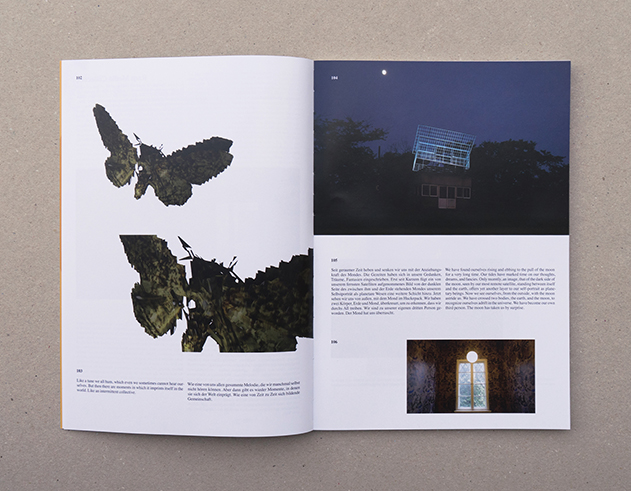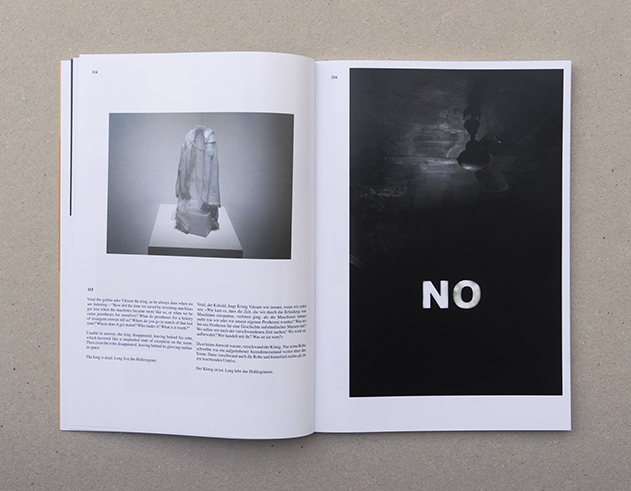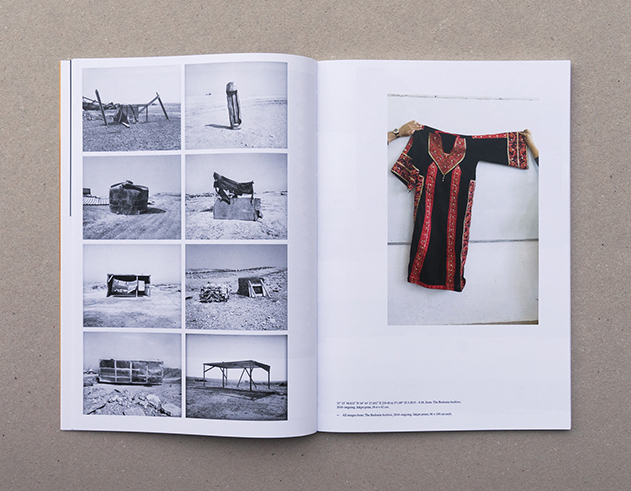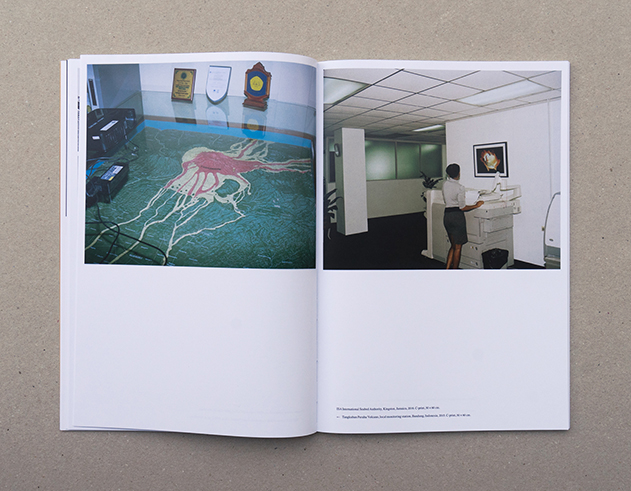Camera Austria International
140 | 2017
- SHVETA SARDA
Raqs Media Collective: A Miscellany of Manifest Texts and Latent Images: Notes and Entries in Accompaniment to the Near Past of a Practice - RAQS MEDIA COLLECTIVE
- YASMINE EID-SABBAGH
Miki Kratsman: Re-Establishing Citizenry - MIKI KRATSMAN
- ESTELLE BLASCHKE
Armin Linke: Panoply of Possibilities - ARMIN LINKE

Preface
“There are people who want the past to be repeated, so they ensure that we cannot remember it,” as Priya Basil notes in Lettre International No. 118, citing Paul Krugman. I can hardly imagine a more apt description of the consolidation of reactionary political powers, now playing out in Austria as well, on the heels of the most recent national parliamentary elections. Such politics are increasingly moving towards a sealed-off, ethnically pure dream present that reflects the past, with its force rooted in the repression of memory of the region called Europe—constantly in flux, immersed in change, social blending, dissolution, and reinvention. The prosperity-driven fear of loss, the angst about an Other who, though essentially unknown, is considered to threaten an identity that never existed. How should we react to fake politics that only governs through regulatory tightening under the guise of media campaigns, Twitter, and selfies?
Entries
Forum
Presented by the editors:
Christina Werner
Dieter De Lathauwer
Carmen Catuti
Eva O’Leary
Alexandra Lethbridge
Verena Winkelmann
Exhibitions
Warsaw Gallery Weekend
Various venues
JAKUB MAJMUREK
G. R. A. M.: Der Regenschirm, die Schaufeln und der koreanische Tanz
Fotohof Salzburg
BRIGITTE KOVACS
Wolfgang Tillmans’ Plakate zur deutschen Bundestagswahl
RAIMAR STANGE
War of Pictures 1945 – 1955. Pressefotografie und Bildkultur im befreiten/besetzten Österreich
Conference at the University of Vienna
SABINE WEIER
Where Are We Now? Retrospective views, presentiments & departures into the unknown. steirischer herbst 2017
Various venues
MARGIT NEUHOLD
Hildegarde Duane: Western Woman
Künstlerhaus Stuttgart
MARIE HIMMERICH
Trigger: Gender as a Tool and a Weapon
New Museum, New York
LARA ATALLAH
Stealing from the West – Cultural Appropriation as Postcolonial Retaliation
Pluriversale VII, Cologne
JENS MAIER-ROTHE
Christoph Draeger und Heidrun Holzfeind: From Without And From Within [The Auroville Project]
Tiroler Künstler*schaft – Kunstpavillon, Innsbruck
CHRISTINA TÖPFER
Farewell Photography. Biennale für aktuelle Fotografie
Heidelberg, Ludwigshafen, Mannheim, various venues
MAREN LÜBBKE-TIDOW
Jan Groover
GAK Gesellschaft für Aktuelle Kunst Bremen
ANDREAS PRINZING
Stefan Burger
Kunsthalle Bern
JÖRG SCHELLER
Sascha Weidner: It’s all connected somehow. Nachlasssichtung I
Sprengel Museum Hannover
MORITZ SCHEPER
The Still Point of the Turning World. Between Film and Photography
FOMU Antwerpen, Antwerp
TACO HIDDE BAKKER
Agnès Geoffray: Before the Eye Lid’s Laid
Centre photographique d’Ile de France, Pontault-Combault,
MICHÈLE COHEN HADRIA
Books
Reportagen, historisch-kritisch editiert
Richard Whelan: This is War! Robert Capa at Work
International Center of Photography, New York; Steidl, Göttingen
Gordon Parks: A Harlem Family 1967
The Studio Museum in Harlem; The Gordon Parks Foundation, New York; Steidl, Göttingen
David Campany: Walker Evans. The Magazine Work
Steidl, Göttingen
JAN WENZEL
Pía Elizondo: The Fall
Self-published, Paris 2017
MIRIAM ROSEN
Carlos Spottorno und Guillermo Abril: Der Riss
avant-verlag, Berlin 2017
SOPHIA GREIFF
Katharina Sykora, Kristin Schrader, Dietmar Kohler, Natascha Pohlmann, Daniel Bühler (Hg.): Das fotografische Dispositiv. Valenzen fotografischen Zeigens
Kromsdorf/Weimar: Jonas Verlag
GISLIND NABAKOWSKI
Abigail Solomon-Godeau: Photography after Photography. Gender, Genre, History
Duke University Press, Durham
WENDY VOGEL
Herta Wolf: Zeigen und / oder beweisen? Die Fotografie als Kulturtechnik und Medium des Wissens
de Gruyter, Berlin
PAUL MELLENTHIN
ÖsterreichBilder – Facing Austria
Fotohof edition, Salzburg
ULRIKE MATZER
Martine Stig: Noir
Fw:Books, Amsterdam 2016
ORIT GAT
Oliver Decker, Frank Berger, Falk Haberkorn: Vom KZ zum Eigenheim. Bilder einer Mustersiedlung
zuKlampen, Springe
SUSANNE HOLSCHBACH
Imprint
Publisher: Reinhard Braun
Owner: Verein CAMERA AUSTRIA. Labor für Fotografie und Theorie.
Lendkai 1, 8020 Graz, Österreich
Editors: Margit Neuhold, Christina Töpfer, Sabine Weier.
Translations: Dawn Michelle d’Atri, Nicholas Huckle, Amy Klement, Wilfried Prantner.
English proofreading: Dawn Michelle d’Atri.
Acknowledgments: Estelle Blaschke, Carmen Catuti, Dieter De Lathauwer, Yasmine Eid-Sabbagh, Susanne Gamauf, Vassiliki Gortsas, Ferial Karrasch, Hannes Klug, Zoran Koletic, Miki Kratsman, Eva O’Leary, Alexandra Lethbridge, Armin Linke, Sonia May, Yasmin Meinicke, Megan Mulry, Klaus Nellen, Raqs Media Collective, Shveta Sarda, J. Emil Senne-wald, Maren Lübbke-Tidow, Franziska von Plocki, Barbara Wais, Christina Werner, Verena Winkelmann.
Copyright © 2017
No parts of this magazine may be reproduced without publisher’s permission.
Camera Austria International does not assume any responsibility for submitted texts and original materials.
ISBN 978-3-902911-38-4
ISSN 1015 1915
GTIN 4 19 23106 1600 5 00140






